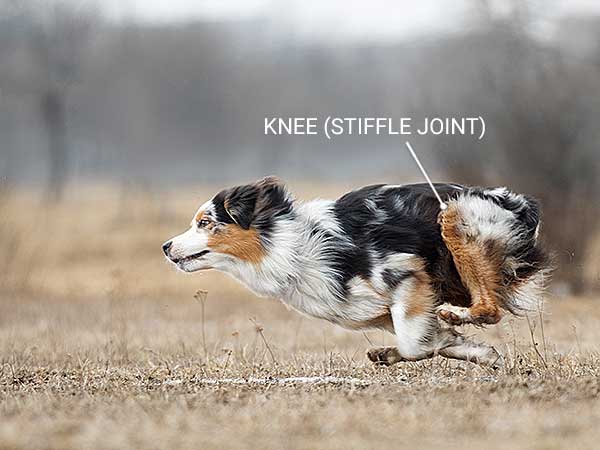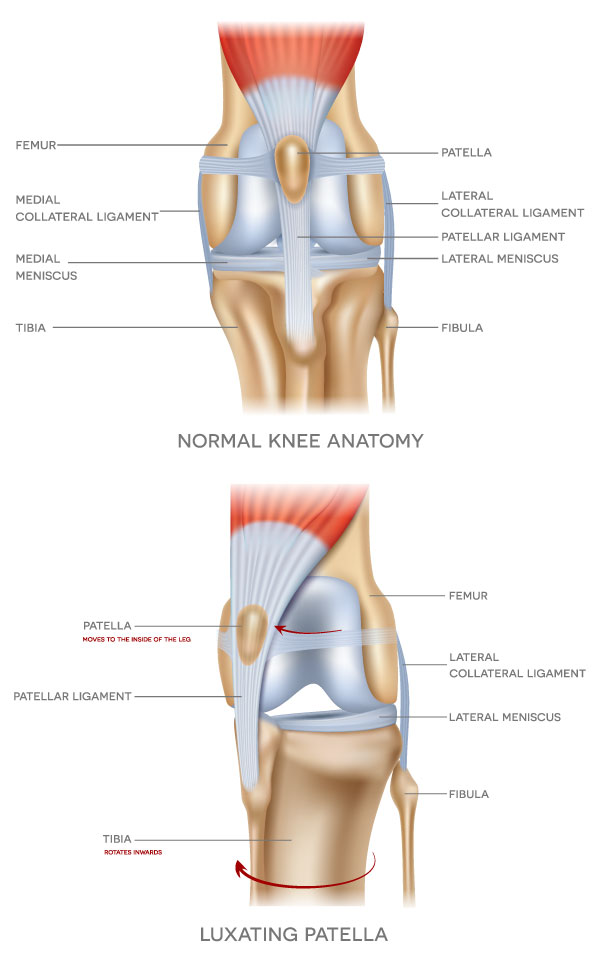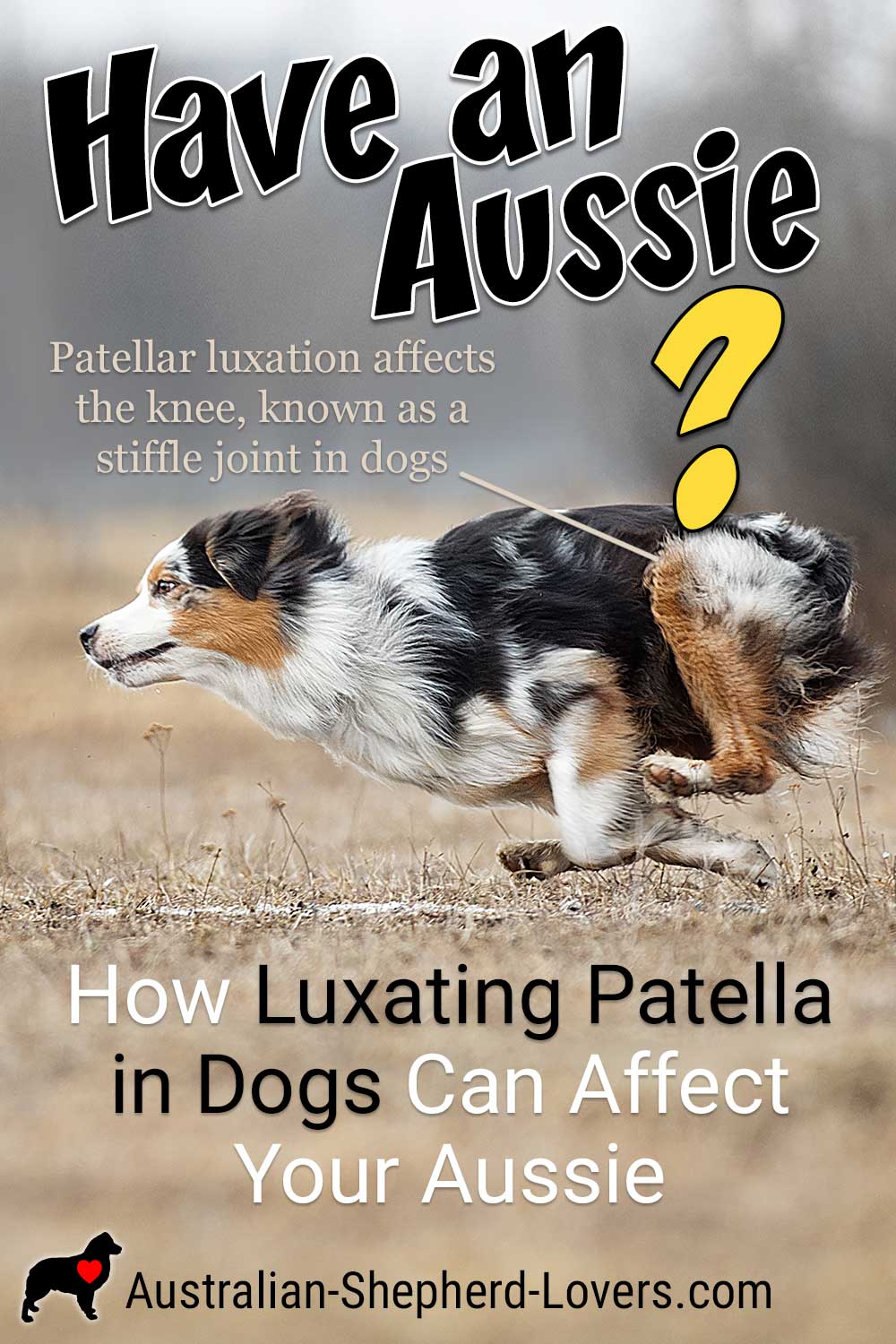
How Luxating Patella in Dogs Can Affect Your Australian Shepherd
Luxating patella in dogs is a common occurrence and, fortunately, can often be easily treated. It may look uncomfortable but in most cases it is not painful. If it occurs repeatedly, however, it can lead to degeneration of the surrounding leg structure, which can lead to chronic arthritis and issues in other joints. For this reason it's important to understand the condition and the steps you can take to treat it.
A patellar luxation in dogs is when the patella, or knee cap, moves out of its normal position. Some dogs, particularly smaller breeds like Chihuahuas, Pomeranians and Yorkshire terriers, have a genetic tendency toward luxation but it can also happen as the result of an injury. Whatever the underlying cause, the condition occurs when the patella moves from its normal position in the groove of the femur, or thigh bone.
Usually the movement of the patella is medial, or toward the inside of the leg near the body. In larger breeds like the Australian Shepherd, however, it often occurs laterally, or towards the outside. It may also happen in either one or both of the hind limbs. When luxating patella in dogs occurs, it can cause a "skipping" lameness or locking up of the affected limb. When this happens regularly, the dog will often learn to shake out the limb in order to return the patella to its normal position, at which point everything will be perfectly normal again.
Levels of Severity of Luxating Patella in Dogs
A patellar luxation in dogs can be diagnosed by your veterinarian and is usually qualified by its level of severity.
Grade I luxation means the patella is dislocated by manual pressure and then returns to its normal position as soon as the pressure is removed. At this mild level, there usually won't be any other clinical symptoms and the dog may not even be bothered by it.
Grade II luxation is when the patella is dislocated by manual pressure and remains dislocated until it is manually adjusted. In this case there may be some lameness while the patella is dislocated. Frequent luxating patella in dogs at this grade can also result in damage to the underlying cartilage, which can then become painful.
Grade III patellar luxation in dogs is when the patella is dislocated most of the time but can be returned to its normal position with manual pressure, however it will also show signs of spontaneously luxating again once the pressure is removed. At this level, there is more likely to be limb structure changes or damage to the cartilage, causing more pain and lameness.
Grade IV is the most serious level of luxating patella in dogs. At this stage, the patella is permanently dislodged from its normal position and cannot be repositioned with manual pressure. This usually results in severe changes to the limb structure, which can lead to lameness and impaired mobility.
Treatment of Patellar Luxation in Dogs
In some cases, patellar luxation in dogs can also be accompanied by a rupture of the cranial cruciate ligament, which is similar to ACL injuries in humans. When these conditions occur there can be significant pain and lameness and often it will be necessary to undergo surgical treatment.
In general, treatment for luxating patella in dogs will depend on the level of severity. In most cases of Grade I or II luxation, the treatment involves the use of pain or anti-inflammatory medications, weight management, and restricted exercise. Many dogs will also benefit from physical therapy to help build up muscle strength so that they can ease back into normal activities.
Surgery May Me Needed to Address a Luxating Patella in Dogs
When Grade II patellar luxation in dogs results in cartilage damage and lameness it may require surgical intervention. Grade III and IV luxations usually require surgical intervention since they involve serious pain and lameness. The surgery for luxations can involve correcting either bony or soft tissue structures in order to realign the knee and allow the joint to function properly. If both legs are affected, surgery will usually be done in stages, allowing time for one leg to heal before the other is treated.
After Surgery for Luxating Patella in Dogs
- Your dog may need to wear a brace or soft bandage for up to five days.
- Exercise will have to be restricted for four to eight weeks following surgery, meaning your dog should be limited to short walks on leash to use the bathroom.
- He should also be crated or confined to a small room to restrict activity.
- Physical therapy can help to reduce the loss of muscle mass and speed the recovery time, allowing him to return to normal activities sooner.
Luxating Patella in Dogs Is Usually Not Too Serious
Fortunately, patellar luxation in dogs is usually not serious and can be easily treated. A little rest, relaxation, and physical therapy may be all that's necessary for your dog to fully recover. Of course, for an active breed like the Australian Shepherd that may be easier said than done. Since Aussies are used to working and sitting still doesn't come naturally to them, it can be difficult to get your dog to stay off his knee while he recovers, but with the proper therapy you should be able to limit that recovery time.
Luxating patella in dogs is something that every owner should be aware of and if you suspect your dog may be having issues with his patella, you should bring it up with your vet so that the condition can be properly diagnosed. Once you know exactly what you're dealing with you can get your dog on the road to recovery and he should be able to resume a happy, healthy and pain free life.
For more information about Patellar Luxation in Australian Shepherds see the Australian Shepherd Health & Genetics Institute (ASHGI).
Have Dog Training Questions?
Check out these introductory dog training videos...
I want my dog to stop being aggressive.
I want some help training my new puppy.
I want my dog to stop barking at everything.
Get Australian Shepherd Info, Website Updates, Special Offers, and Cartoons...
FREE GIFT
You'll also receive a free copy of the ebook
My Everyday Dog Training Tools
by professional dog trainer Daniel Abdelnoor, "Doggy Dan"













 Loading Image...
Loading Image...